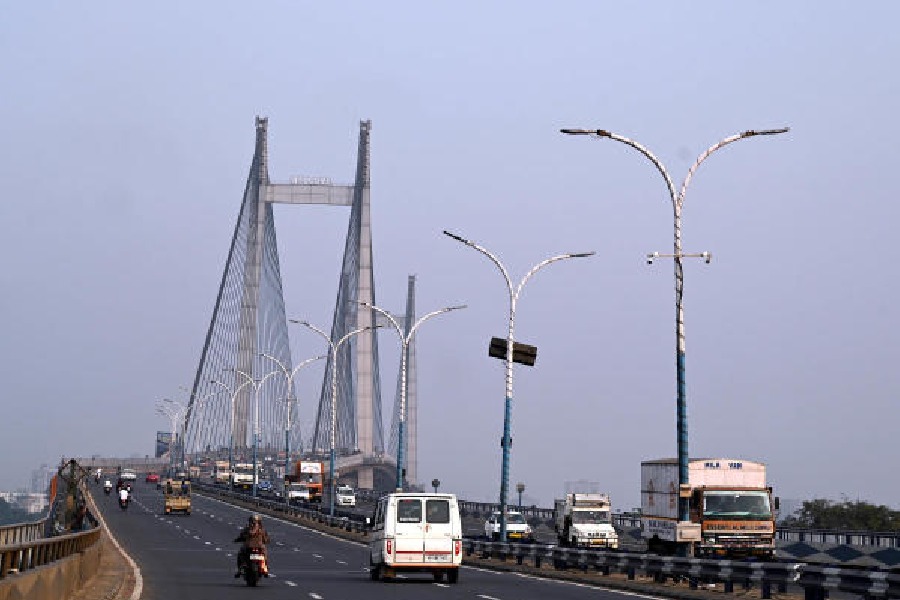14 overhead cables of Vidyasagar Setu will be replaced in January, the first such initiative since the bridge was inaugurated in 1992 to change the cables visible from outside.
“A health audit of the bridge revealed that the innermost core of 14 of the overhead cables has been damaged. So, the cables need to be replaced,” said an official of the Hooghly River Bridge Commissioners (HRBC), the custodian of the structure.
The cables to be installed are being imported from Germany and will be fitted under the supervision of a team of French experts, the official said.
Vidyasagar Setu, an iconic structure of Calcutta, is the country’s longest cable-stayed bridge with 152 overhead cables.
There are two sets of piers at either end to hold the cables.
“Importing the cables from Germany would cost around Rs 60 crore. We have placed the order and the consignment is expected to reach Calcutta by December.”
Each of the 152 cables has three layers. The innermost layer is made of non-galvanised cables and the visible outer layer is made of rubber. The layer in between is of wax, which prevents water seepage.
The core of the new cables will fight corrosion better, engineers said.
“These cables are customised for Vidyasagar Setu. Once the new 14 cables are installed, we will start identifying those that should be replaced next,” said a senior HRBC engineer.
Vidyasagar Setu was built at a cost of around Rs 388 crore. The construction continued for 22 years.
The HRBC has already replaced 16 “holding down” cables of the bridge.
Vidyasagar Setu has two sets of pylons, with underwater foundations, at both ends to hold the cables on the top.
The “holding down” cables, which are inside the pylons, ensure that the cables above can hold the tension of the entire structure, engineers said.
“The combination of the ‘holding down’ cables and the 152 stay, or overhead, cables make Vidyasagar Setu the longest cable-stayed bridge in India,” an HRBC official said.
Around 90,000 vehicles use the bridge daily to commute between Calcutta and Howrah.
The replacement of the “holding down” cables required traffic rejig. “We will again seek a traffic block in January to replace the overhead cables,” the official said.










